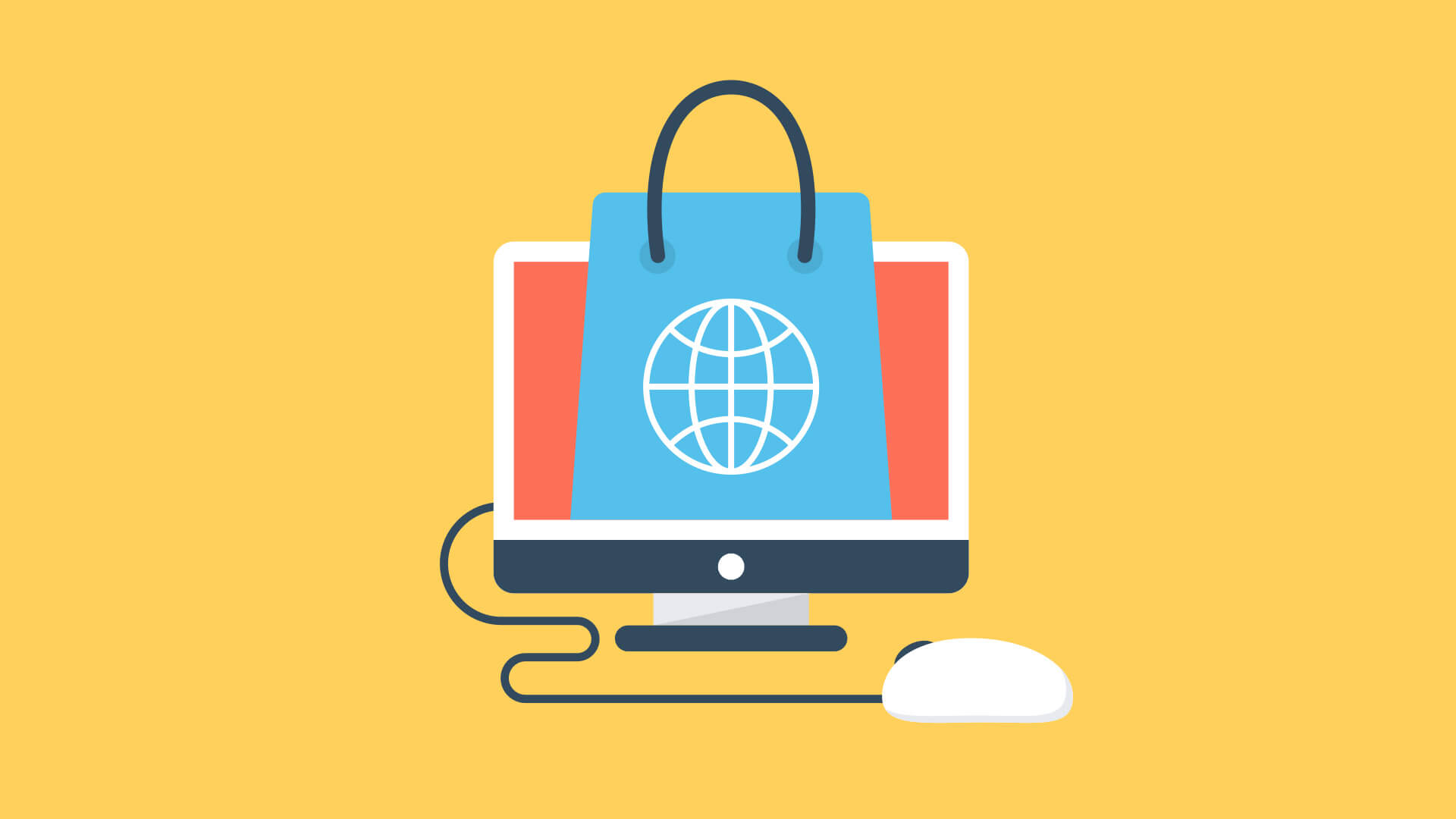Planning the Structure of Your Mobile Web Site
While structuring a mobile website, we must spend enough time on information architecture design, if the user has to spend too much time to locate the information he/she wants, they may get bugged and go away, no businessman or even normal user would like that, all web site owners certainly not going to allow that, here is some guide lines we should follow them:
- Define user personas: Who is going to use the web site? What’s the target market? In what circumstances will they come to the site? What’s the context? List down typical users who would use the application.
- Define user goals: What tasks do they want to achieve on the web site? Is there a better way of achieving these goals than a typical website flow? Why would they want to do this task over a mobile? How does your mobile site help them accomplish their goals?
- Define target devices: Do you want to limit to a particular set of devices? Or use some device-specific feature? Do you want to use SMS/Phone capabilities?
- Do paper prototypes: Sketch out the workflow for accomplishing user goals on paper (yes, pen and paper are still useful!).
- Test with real users: Show the prototype to real users and get their feedback, Make modifications, accordingly.
- Make XHTML prototype and test again: After you’ve passed the paper prototyping round, convert the prototypes into XHTML MP. Now test them on target mobile devices. Test them also with real users and make modifications till you get things right.
Here are also a few tips you can keep in mind when you work on your mobile websites:
- Take a minimum approach, remove everything that you can.
- Respect the user’s time, money, and attention. Don’t frustrate them.
- Do task centered design and focus on user goals.
- Give less choice no long menus, no long options, and no long pages.
- Maximum 10 links on a page.
- Navigation should be drill down, and contextual. Customize navigation, according to the page, no more than 5 levels of drilling down.
- No pages with just links to drill down further, make sure each page has valuable content. Even the homepage should have actionable content.
- Prioritize links and content. What’s more important goes to the top.
- Always provide a way to exit to home, and step back in the footer.
- Break lengthy/complicated forms into a wizard like step-by-step process.
OneHoster is one of the best web hosting companies in Egypt, we offer many web hosting packages in Egypt and middle east like, cPanel storage hosting packages, cloud hosting, domain registration, dedicated servers solution, Email hosting, WordPress hosting, web hosting upgrades and hosting renewals to suit your requirements to host your website for small and medium sized businesses. OneHoster is also one of the top 10 website design companies, and top 10 digital marketing companies in Egypt and Middle east.
“OneHoster’s Team”
The Web on the Move, Designing a Website for Mobile Users
The history of the web and web browser dates back to late 1980s, when a variety of technologies laid the foundation for the first web browser, World Wide Web was founded by Tim Berners-Lee in 1991. That was the starting of a new era the web and web browser brought together a variety of existing and new software and hardware technologies, at the first days browsing the web was text-based user interfaces when the graphic user interface (GUI) become more popular web browsers also move to GUI but all development of them was tend to the desktop users.
When technology grow fast and mobile devices became an important part from our daily life activities, and the need for access web from a mobile increases more and more, here we discover the problem that is the web was not developed for such devices, but there was many trials and contributions to enhance the access from such device, in this thesis we try to add a new contribution through providing some new techniques that try to solve such problem.
The World Wide Web Consortium (W3C) and mobile industry leaders are working together to developing best practices for creating mobile-friendly content and applications, enabling easy access to device descriptions, setting up test suites for increased interoperability of mobile browsers, and exploring ways to use the Web on mobile devices they try also to improve Web content production and access for mobile users and the greater web, The goal is that making Web site access from a mobile device as simple as Web site access from a desktop device, and this is what we called it the web on the move.
OneHoster is one of the best web hosting companies in Egypt, we offer many web hosting packages in Egypt and middle east like, cPanel storage hosting packages, cloud hosting, domain registration, dedicated servers solution, Email hosting, WordPress hosting, web hosting upgrades and hosting renewals to suit your requirements to host your website for small and medium sized businesses. OneHoster is also one of the top 10 website design companies, and top 10 digital marketing companies in Egypt and Middle east.
“OneHoster’s Team”
Website Design Service for Mobile Devices
Accessing the Internet from mobile devices is becoming increasingly popular, for the past few years mobile devices (mobile phone, smart phone, tablets, PDA or palmtop) have rapidly become an integral part of our lives, We can talk and send messages or video streams by them, and with an internet connection we can have access to any kind of web content, Today there are over 1.1 billion web capable handsets in use worldwide which is 63% of the total handsets of the world, However, as can be read in mobile web access is hindered by the fact that the majority of web contents are tailored for desktop computers. Compared to desktop computers mobile devices have got some evidential drawbacks.
Web access from mobile devices presents its own unique challenges we have to severe resource constraints on the mobile devices, their performance is usually much lower processor memory, their screens are smaller, and generally their internet connections are much slower, power, form factor, bandwidth and battery, mobile web users face a big problem that the majority of web content are tailored for desktop computers which can have a large display area and high connection speed compared with mobile devices which have smaller display area and limited connection speed also, There was many trials to solve this problem or even enhance the existing model to have better results.
Hence in the majority of the cases it is impossible to display the original web content, which is customized to a desktop computer with a 17” monitor or higher, on the display of a handheld device in a usable and efficient way. Somehow we should adapt the original content to the capabilities of the client device. This problem led to create two versions from any web content one for desktop computer and other with special constrains for mobile web. There were some others contributions to solve this problem, Instead of having two versions for each web content one for normal users and the other for mobile users.
Also there is an important issue should take in consideration when you author any web content that we should optimize it we will list some best practices for delivering web content to mobile devices to save mobile resources like battery power and limited connection speed, The principal objective is to improve the user experience of the web when accessed from such devices, and also use some technique to the Hypertext Transfer Protocol (HTTP) request and improve the display of the same content to fit the mobile users.
OneHoster is one of the best web hosting companies in Egypt, we offer many web hosting packages in Egypt and middle east like, cPanel storage hosting packages, cloud hosting, domain registration, dedicated servers solution, Email hosting, WordPress hosting, web hosting upgrades and hosting renewals to suit your requirements to host your website for small and medium sized businesses. OneHoster is also one of the top 10 website design companies, and top 10 digital marketing companies in Egypt and Middle east.
“OneHoster’s Team”
What is Mobile Web Limitations?
Old mobile devices have screen size from 120×120 pixels up to 320×240 this means that you can show about 6 lines of 25 characters, some mobiles also support a few types of images and multimedia format for example animated GIF is not supported on most phones, the mobile browser of course faces the same limitations that mobile web faces like:
- Small screen size: This makes it difficult or impossible to see text and graphics dependent on the standard size of a desktop computer screen.
- Lack of windows: Ability to open more than one window
- Navigation: No mouse thereby limiting the flexibility in navigation
- Lack of JavaScript and cookies: Most devices do not support client-side scripting and storage of cookies except smart phones and iPhone, this is not being suitable for uniquely identifying visitors using mobile devices.
- Speed: Most mobile devices speed of service is very slow, often slower than dial-up Internet access.
- Types of pages content like (Flash, PDF …)
- Compressed pages
- Size of messages: Many devices have limits on the number of characters that can be sent in an email message.
- Cost: Access and bandwidth charges levied by cell phone networks are much higher than those for fixed-line internet access.
Now day mobile devices try to solve most of the previous problems thought develop some strategies like increasing the screen size, enhance the hard resources like processor capability, add more ram, develop a new operating system (OS), enhance the Global System for Mobile Communications (GSM) network itself or add a network card to provide the wireless access thought using the Wi-Fi technology.
OneHoster is one of the best web hosting companies in Egypt, we offer many web hosting packages in Egypt and middle east like, cPanel storage hosting packages, cloud hosting, domain registration, dedicated servers solution, Email hosting, WordPress hosting, web hosting upgrades and hosting renewals to suit your requirements to host your website for small and medium sized businesses. OneHoster is also one of the top 10 website design companies, and top 10 digital marketing companies in Egypt and Middle east.
“OneHoster’s Team”
Cloud Service Model
Cloud services are the basic principle behind the emergence of cloud computing. As explained earlier, there are generally four types of deployment approaches which are private clouds, public clouds, community clouds, and hybrid clouds. Meanwhile, there are three main categories of services that can be offered by any cloud architecture and technology. The first category is Infrastructure as a Service (IaaS) which is a concept of providing the whole IT infrastructures such as storage, virtual environment, servers, platforms, and applications. The second category is Platform as a Service (PaaS), which is a concept of providing a complete service level application development environment, as a service over the Internet right from requirements to the complete life cycle. Last category is Software as a Service (SaaS) which is a concept of providing software applications as a service on demand over the Internet that means it can be run anywhere and anytime. In addition to pay per use rather than to buy, Figure 1.1 illustrates the cloud services model overview.
Figure 1.2 illustrates the service models and the cloud deployment models. All the services can be delivered on any of the cloud delivery models, PaaS and SaaS is often used in conjunction with other software. When they are used as a component of another application, this is called a plug-in or mashup.
Infrastructure as a service (IaaS)
IaaS is simply the physical and virtual resources used to build the cloud. IaaS composed essentially from hardware devices like visualized servers, storage units, networking devices, etc. It refers to a virtualization environment where services enable the cloud platforms and applications to connect and operate. This is the data center(s) and the cost is often based on the resources used. IaaS delivers cloud computing services, typically in the form of a set of virtual machines with associated storage, processing capabilities, and other relevant services and network connectivity.
The deployment model for enables multiple applications, owned by different cloud consumers, to transparently share common underlying physical resources. This is a good alternative for companies instead of investing on their own stuff. The service layer model from bottom to top is IaaS, PaaS and SaaS. IaaS layer is at the bottom of the service model layer. The layer on top of IaaS is PaaS and it is common to build PaaS solutions on top of the IaaS environment to allow the platform to dynamically respond to demand by taking advantage of the IaaS functionality. Figure 1.3 illustrates the cloud service model layers.
Many researchers have attempted to define cloud frameworks by adding other essential components, such as management, quality, security and communication to the basic cloud structure IaaS, PaaS and SaaS. There is an overlap of cloud provision between the three layers, for example a component of information system platform as PaaS may be regarded as part of information system infrastructure as IaaS. Also SaaS may be considered as part of a software platform as PaaS.
Platform as a service (PaaS)
PaaS is considered as the complete cloud computing platform that provides provision and manages the cloud infrastructure. In addition, it provides deployment, development, and administration tools. Elasticity of the model is achieved by scaling up or down based on the system needs. The fault tolerance and the load balancing might be provided for the database management system to increase the reliability and enhance the performance. The Hardware as a service (HaaS) appears under the PaaS layer. Figure 1.4 illustrates the service model hierarchies. Pricing can be managed in this level on many dimensions to establish cloud platform, operating systems, database management systems, Web servers, programming language, etc.
PaaS is an abstract concept, unlike IaaS and SaaS. PaaS would be in the middle of the service layer model, with IaaS at the bottom and SaaS on the top to interface with the end users and consumers. What is being provided is part from the operating system and part from middleware. A proper PaaS provider takes care of everything needed to run some specific language or technology stack. PaaS provides a care free environment for developers to work, thus allow the developers to focus on coding and free from the configuration and maintenance of the underlying platform. By using PaaS, developers simply pick the languages and the required features, match those requirements with a provider that has them, and start coding. The support for Web development interfaces is available in PaaS, such as Simple Object Access Protocol (SOAP) or Representational State Transfer (REST). This allows the design and development of multiple Web services or mashup to reuse services or access databases.
Software as a service (SaaS)
Known as on-demand software, it provides the complete software solutions system, such as Customer relationship management (CRM), social networks, documentation management and content management. It is also a software delivery method to provide access to software and the corresponding functions remotely as a Web-based service. SaaS allows organizations to access business functionality at a cost typically less than paying for licensed applications. Software is hosted over cloud and users don’t need to invest in additional hardware. SaaS removes the need for organizations to handle the installation. Usually, the refer to the cloud most mean what is provided in SaaS. The services and their related data can be used combined or directly with SaaS providers. The benefits of using SaaS can be summarized as follows:
- Easier administration.
- Automatic updates and patch management at any time.
- Compatibility so that all users will have the same version of the software.
- Easier collaboration.
- Global accessibility.
SaaS services normally run behind a firewall on a network and provide on-demand usage. It is known as pay as you go paradigm, and customer will purchase functionality and pay for using it. Sometimes this service is available to general public totally free of charge. There is much more advantages for this approach include readily available, well tested functionality, ease of use, faster implementation, multi tenant efficiency, scalability, reliability and ease of management. SaaS is located at the top of the cloud service model and use the services provided by the lower layers. Figure 1.5 illustrates the cloud computing service relationships for IaaS, PaaS and SaaS.
SaaS offer benefits for both the users and the cloud computing providers. There is an effect of cloud computing for cloud providers and SaaS providers and cloud users. The top level can be recursive in which SaaS providers can also be SaaS users. For example a mashup provider of rental maps might be a user of the Craigslist and Google maps services.
Network as a service (NaaS)
After exploring the three main cloud services, here is a description for some other extra categories of cloud services, like NaaS, HaaS and DaaS. NaaS is considered to be part of the nomenclature of cloud computing. NaaS is based on describing the use of network connectivity services capability provided to the cloud service user. The optimization of resource allocations by network and computing resources is involved in NaaS. NaaS provides a cloud enabled pay as you go procurement model for network infrastructure and services and enables the network to be available as a subscription. This could be implemented in routers or cloud Virtual Private Network (VPN) gateways.
Traditional NaaS services include flexible and extended VPN and bandwidth on demand. Naas Service Model varies depending on the network enabler, the network user, and the service provided. Below is a description for the common models of NaaS :
- Virtual Private Network (VPN)
This model extends a private network and the resources contained in the network across public networks like the Internet. It enables a host computer to send and receive data across shared or public networks as if it were a private network with all the functionality and policies of the private network.
- Bandwidth on Demand (BoD)
Technique by which traffic bandwidth in an IT or telecom network is assigned based on requirements between different nodes or users. Under this model, the link bandwidth is dynamically adapted to the instantaneous traffic demands of the nodes connected to the link.
- Mobile Network Virtualization
Most common implementation of mobile virtual network is the Mobile Virtual Network Operator (MVNO), in which a mobile communication service provider does not own the radio spectrum or wireless network infrastructure over which the MVNO provides services to its customers.
Hardware as a service (HaaS)
Instead of purchase servers, software racks, and having to pay for the datacenter resources, the service provider rents those resources. Cloud provides application to customers using PaaS and SaaS, HaaS simply offers the hardware to the organization to utilize. With HaaS, it is possible to rent resources such as server space, memory, CPU cycles, storage space, or even network equipment. HaaS is considered as a service provision model for hardware based on the application resources needs. HaaS enables the dynamic scale up or down of the infrastructure and billing is based on the resources usage.
HaaS is considered as a sub category from PaaS as Figure 2.20 explained. PaaS provides the platform and the hardware which always available as a service through hosting providers. With dedicated hosting, the users still have to deal with dirty hardware issues like scalability, but using HaaS makes it a totally good experience. HaaS involves several pieces, such as:
- Service level agreements: an agreement between the provider and the client, guaranteeing a certain level of performance from the system,
- Computer hardware: These are the components whose resources will be rented out. Service providers often have this set up as a grid for easier scalability,
- Network: This includes hardware for firewalls, routers, load balancing, etc.,
- Internet connectivity: This allows clients to access the hardware from their own organizations,
- Platform virtualization environment: This allows the clients to run the virtual machines of their choice, and
- Utility computing billing: Typically set up to bill customers based on how many system resources are used.
Data as a services (DaaS)
DaaS is a sub category SaaS that is based on the concept that data can be provided on demand to the user regardless of the geographic or organizational separation of the provider and the consumer. The idea behind DaaS is to avoid the complexity and cost of running local database. Data provided as a service was at first primarily used in Web mashups, but now is being increasingly employed both commercially and less commonly within organizations. Most enterprises have used data stored in a self contained repository for which software was specifically developed to access and present the data in a human readable form. One result of this paradigm is the bundling of both the data and the software needed to interpret it into a single package, sold as a consumer product.
DaaS brings the notion that data quality can exist in a centralized place which is responsible for cleansing and enriching data and offering it to different systems, applications or users. Irrespective of where they were in the organization or on the network. As such, DaaS solutions provide the following advantages:
- Ease of use: There are no servers to provision and no redundant systems to worry about. The users are not worry about buying, installing, or maintaining hardware for the database,
- Power: The database isn’t housed locally, but that doesn’t mean that it is not functional and not effective. Depending on the vendor, the user can get custom data validation to ensure accurate information.
- Integration: The database can be integrated with other services to provide more value and power, for example, the user can tie the data in a database with calendars, email, and people to make the work more powerful, and
- Management: Because large databases benefit from constant pruning and optimization, this task need expensive resources to accomplish. With some DaaS offerings, this management can be provided as part of the service for much less expenses. The provider will often use offshore labor pools to take advantage of lower labor costs.
OneHoster is one of the best web hosting companies in Egypt, we offer many web hosting packages in Egypt and middle east like, cPanel storage hosting packages, cloud hosting, domain registration, dedicated servers solution, Email hosting, WordPress hosting, web hosting upgrades and hosting renewals to suit your requirements to host your website for small and medium sized businesses. OneHoster is also one of the top 10 website design companies, and top 10 digital marketing companies in Egypt and Middle east.
“OneHoster’s Team”
What is the Mobile Web Mean?
Mobile Web refers to browser based web services such as the World Wide Web (www) by using WAP for mobile device such as a cell phone, PDA, or other portable connected device to a public network. Such access does not require a desktop computer or a fixed landline connection. The total number of mobile web users grew past the total number of PC based internet users for the first time in 2009 any web site accessed from a mobile device is mobile web, In 25 November, 2008 European communications write an article with title Mobile internet growth eight times greater than PC-based internet growth, says new analysis, this also tell us that the number of mobile web users become bigger than pc based users.
Mobile Web access today still suffers from interoperability and usability problems. This is partly due to the incompatibility of the format of much of the information available on the Internet with mobile devices and partly due to the small physical size of the screens of mobile devices and other device limitations.
Mobile web access was commercially offered in Finland in 1996 on the Nokia Communicator 9000 phone on the Sonera and Radiolinja networks, this was the first access to the real internet. The first commercial launch of a mobile-specific browser based mobile web service was in 1999 in Japan when i-Mode was launched by NTT DoCoMo.
Now day mobile Web primarily utilizes lightweight pages written in Extensible Hypertext Markup Language (XHTML) or Wireless Markup Language (WML) to deliver content to mobile devices. Many new mobile browsers are moving beyond these limitations by supporting a wider range of Web formats, including variants of HyperText Markup Language (HTML) commonly found on the desktop Web.
OneHoster is one of the best web hosting companies in Egypt, we offer many web hosting packages in Egypt and middle east like, cPanel storage hosting packages, cloud hosting, domain registration, dedicated servers solution, Email hosting, WordPress hosting, web hosting upgrades and hosting renewals to suit your requirements to host your website for small and medium sized businesses. OneHoster is also one of the top 10 website design companies, and top 10 digital marketing companies in Egypt and Middle east.
“OneHoster’s Team”
Hybrid Web Applications (Mashup)
The using of mashup in the proposed architecture become important issue when noticed that there are some problems that face webmasters, Web developers, and Web designers in their everyday work. This problem comes from the nature of Web technology. Big part from this problem could be solved using mashup, since it is fairly easy to implement the Web content systems from different online services. Mashup is a Web page or application that combines resources or functionalities from two or more sources creating a new application or service. Mashup is an emerging software engineering paradigm aligned with the trend towards the programmable Web. Mashup is based on the longest tail theory which is from business perspective to allow the use of different services and to break down business processes into smaller pieces.
The history of mashup comes from music industry before it become an Internet popular concept in which musicians combine mixture of two or more tracks to create a new song that is called mashup. Figure 1.1 illustrates the concept of mashup for Internet technology. Today Web mashups are becoming one of the salient tools for providing composite services to meet users request and open a new area for researchers with many endeavors to enhance this technology for Web developers and designers. Many approaches used now for mashup of Web contents and Web technologies to provide a mobile Web contents, to offer Web application, or even for Web application programming interface (API). One of these contributions is a method to utilize the social and functional relationships among Web APIs to produce and recommend the chains of candidate mashup.
The combination of wireless communication, cloud computing, portable computing devices and the concept of mashup has laid the foundation for a novel computing model, called mobile mashup cloud computing or hybrid mobile Web cloud applications. This provides the users with an online access to unlimited computing power and extra powerful Web applications. This type of combination can unveil a world of new innovative mashups technology that tackles some old problems. the challenges include how to abstract the complex heterogeneous underlying technology, how to achieve optimal adaptation under different constraints, how to model all the different parameters that influence the performance and interactivity of the application, and how to integrate computation and storage with the cloud while preserving privacy and security.
It is known that Web applications in service oriented architectures are implemented as Web services with XML-based protocols to provide plentiful information to users by object oriented techniques. Web applications today enjoy with a great progress, this enable traditional Web and mobile Web to be designed toward, facilitating interactive information sharing, providing interoperability and collaboration mechanisms, and establishing user oriented service.
Mashup types
Mashups can be categorized into three main types which are, data mashups, consumer mashups and business mashups as follows:
- Data mashups
Data mashup aims to combine similar multiple types of media or information from multiple data sources into a single representation. The combination of all these resources creates a new representation. This new representation is a distinct Web service from the sources and provides data in a new Web service. This new Web service was not originally provided by any of the sources. An example for this mashup is the Skyscanner.com that combines data and provides flight tickets from multiple sources such as British Airways, Air France and Iberia.
- Consumer mashups
Is designed for the general public and is considered as a counterpart of the data mashup but by combining multiple public data sources of different data types into a visual representation. Consumer mashup is a very effective mean for personalizing data according to the customer’s needs. Wikipediavision is an example of consumer mashup. It combines real time data from the Wikipedia with Google Maps allowing users to see real time edits to Wikipedia on a world map.
- Business mashup
Sometimes called as enterprise mashup, business mashup aims to solve business problems like the consumer mashup but it works differently in other aspects such as the security levels required. The level of sophistication is the need for quality of Service (QoS) and some other aspects. Business mashup defines applications that combine their own resources, or application and data with other external Web services, or generally combine internal information and services of an enterprise with external resources into a visually rich Web application. It combines data into a single presentation and allow for collaborative action among businesses and developers. It is a secure visually rich Web applications that expose actionable information from diverse internal and external information sources. An example of this category could be PivotalTracker which is a Web-based agile project management tool that allows integration with Twitter, where the project’s members can see real-time updates
2.3.1 Mashup examples and applications
As mentioned before, there are many examples of mashup that are in use for many different business types. For example, mashup video is a video that is edited and built from more than one source and finally displayed as a single video. The most famous example which is very tied to the proposed work is the hybrid Web application, which is the Web application that its data and/or functionality are combined from more than one source. Mashup has characteristics or number of components. The components could be described as a sequence architecture model because each component is based on the other components in a sequence scenario. Below is a list of these mashup components:
- Type: such as Data mashups, Consumer mashups and Business mashup,
- Service Provider: provides access to resources or services online in which the provided services or resource construct the mashup Web applications,
- Protocol: a particular set of rules and guidelines to exchange messages between services which offered by the service provider. The protocol is used for communication between the server and the client, and between the resources and the server,
- Data format: describes how the information is stored in the exchanged messages, these messages contain the required information in a pre defined data format,
- Architecture: this sequence scenario represents a particular architecture, about how the transmission done to the client from the combined resources in the server. Examples of these architectures are directly send the information to the client or combining it in the server first before sending, and
- Interface: last step in this sequence scenario is the client have to see final results from a Web interface, all of this is based on the mashup type, which is done in the first step.
The distinguish between mashup applications and traditional applications is is not an easy task because the border between what is a mashup and what is not is very thin and requires knowledge about how the application work internally, what services the application is using, and its type and service parameters. Programmableweb.com is a mashup directory which has more than 4900 mashups services along with more than 2000 Web APIs, Figure 1.2 illustrates only the top 10 APIs for this mashup.
Mashup is composed of three layers:
- Presentation or User interaction layer: this layer consists of most of the famous languages such as HTML, CSS, AJAX, and XML that are used to make the mashup as visually appealing and functionally efficient as possible,
- Web Services: is used to connect to the products functionality with API services, some tools such as XML HTTPRequest and SOAP are used to accomplish this task, and
- Data: the main content comes here, and it is concerned by how the sending, the storing and the receiving of data are done, most often XML is used.
OneHoster is one of the best web hosting companies in Egypt, we offer many web hosting packages in Egypt and middle east like, cPanel storage hosting packages, cloud hosting, domain registration, dedicated servers solution, Email hosting, WordPress hosting, web hosting upgrades and hosting renewals to suit your requirements to host your website for small and medium sized businesses. OneHoster is also one of the top 10 website design companies, and top 10 digital marketing companies in Egypt and Middle east.
“OneHoster’s Team”
Cloud Computing the Way of the Future
In traditional desktop, the whole scene is PC centric, run copies of software programs on each computer. The created documents are stored on the computer in which they were created. Documents can be accessed from other computers on the network and they can’t be accessed by computers outside the network unless configured otherwise. In cloud computing, the software programs aren’t run from the client computer, but are rather stored on servers accessed via the Internet. The software is available for use and anyone with the right permission can access the documents. Meanwhile, editing and collaborating with other users in real time can be done easily. Figure 1.1 illustrates that from traditional desktop applications to cloud applications, now companies will not pay for the hardware and maintenance, the service provider pays for the equipment and maintenance.
With network computing, applications and documents are hosted on a single company’s server and accessed over the company’s network. Cloud computing isn’t a network computing. Cloud computing encompasses multiple companies, multiple servers, and multiple networks. Unlike network computing, cloud services and storage are accessible from anywhere in the world over an Internet connection while in network computing the access is over the company’s network only. According to the user perspective the technology and infrastructure behind the cloud is invisible. Whether cloud services are based on HTTP, HTML, XML, JavaScript, or other specific technologies, there are six main properties of cloud computing:
- Cloud computing is user centric
Once users are connected to the cloud, the stored documents, messages, images, and applications can be accessed. In addition, not only is the data accessed, but also users can share with others and access all devices connected to the same cloud account.
- Cloud computing is task centric
Instead of focusing on the application and what it can do, the focus is on what the users need to be done and how the application can do it for them.
- Cloud computing is powerful
Connecting hundreds or thousands of computers together in a cloud creates a wealth of computing power impossible with a single desktop PC.
- Cloud computing is accessible
Because data is stored in the cloud, users can instantly retrieve more information from multiple repositories. Users are not limited to a single source of data, as with a desktop PC.
- Cloud computing is intelligent
With all the various data stored on the computers in a cloud, data mining and analysis are necessary to access that information in an intelligent manner.
- Cloud computing is programmable
Many of the tasks necessary with cloud computing must be automated. For example, to protect the integrity of the data, information stored on a single computer in the cloud must be replicated on other computers in the cloud. If that one computer goes offline, the cloud’s programming automatically redistributes that computer’s data to a new computer in the cloud.
OneHoster is one of the best web hosting companies in Egypt, we offer many web hosting packages in Egypt and middle east like, cPanel storage hosting packages, cloud hosting, domain registration, dedicated servers solution, Email hosting, WordPress hosting, web hosting upgrades and hosting renewals to suit your requirements to host your website for small and medium sized businesses. OneHoster is also one of the top 10 website design companies, and top 10 digital marketing companies in Egypt and Middle east.
“OneHoster’s Team”
OneHoster Best Web Hosting Company in Egypt and Middle East
OneHoster is an Egyptian company owned by Dr. Mohamed Ali CEO & Founder. Since opening our doors in 2001 under another name, has grown into a full-service web solutions, web hosting, web design, digital marketing and graphic design agency focused on creating integrated strategies, intuitive technology and award-winning design work that produce meaningful results. In October 2010 we upgrade our servers and services also and change our company name to be OneHoster. We have a stable structure for web hosting, web design, web development, digital marketing and graphic design. Our services have been recognized internationally through providing real services for our clients all over the world and independent end users.
OneHoster strives to collaborate with our customers to bring creativity and innovation to all aspects of their organizations. We foster an environment for our employees that encourage thinking outside the box, honest communications, productive team interactions and personal growth. We have the ultimate goal of building a successful organization by remaining a strong and relevant leader in our industry. OneHoster is pleased to introduce its services that will help you conduct and promote your business. We believe in using state-of-the-art technology to deliver reliable and professional services at reasonable prices to our customers. We grow and develop with our customers’ needs in mind. OneHoster gives your business the competitive edge you are looking for.
International market
- USA.
- Europe: UK, France, Italy, and Norway.
- Gulf: Saudi Arabia, Qatar, Libya and Bahrain.
- East Asia: China and Russia.
Local market
- Cairo.
- 10th of Ramadan..
- Bader Industrial Zone.
- Alexandria.
- Amria Free Zone.
- Borg El Arab – Industrial Zone.
- Rasheed.
- Al Nobaria.
- New Domietta – Industrial Zone.
- Domietta.
- Quesna – Industrial Zone.
- Tanta.
- ELMehalla Elkobra.
- Zakazik.
- Al Mansoura.
- Siwa.
- Sharki, New Salheya City – Industrial Zone
- Behira.
- Bani Souef.
- Gharbia.
OneHoster is one of the best web hosting companies in Egypt, we offer many web hosting packages in Egypt and middle east like, cPanel storage hosting packages, cloud hosting, domain registration, dedicated servers solution, Email hosting, WordPress hosting, web hosting upgrades and hosting renewals to suit your requirements to host your website for small and medium sized businesses. OneHoster is also one of the top 10 website design companies, and top 10 digital marketing companies in Egypt and Middle east.
“OneHoster’s Team”















